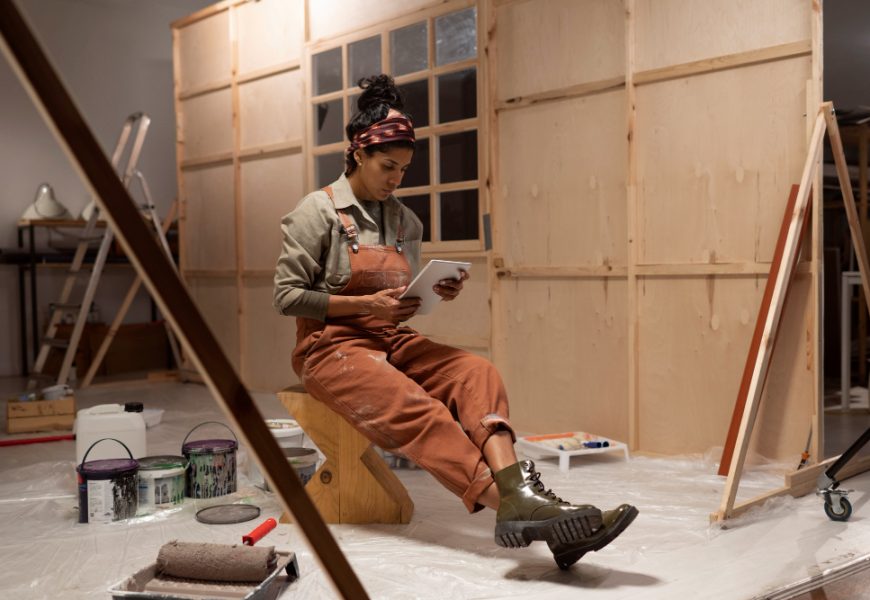It is easy to think of asbestos as something from the past — a risk left behind decades ago. But today, around 1 in 5 UK homes could still contain asbestos materials, hidden in walls, ceilings, or floors.
Most of us only discover it when we start pulling our homes apart for upgrades. And by then, it could already be a bigger problem.
Recent studies suggest that about 1.5 million UK homes, particularly those built before the late 1980s, could be hiding asbestos behind seemingly harmless surfaces.
Imagine starting your dream renovation by tearing down that old textured ceiling, only to find materials that could seriously harm your health.
Renovating your home is exciting. It’s an opportunity to make it your own and create the space you want. But hidden dangers like asbestos can turn this exciting project into a costly and stressful problem if you’re not careful.
If you plan to renovate, it’s essential to know what might be hiding behind the paint or old floorboards. Let’s get started!
Understand Why Asbestos Is Still Found in UK Homes
For much of the 20th century, people praised asbestos as a “wonder material.” It was the following:
- Fire-resistant
- Durable
- Cost-effective
In the UK, it was commonly used in construction from the 1940s until it was banned in 1999.
If your house was built before 2000, it probably still contains asbestos. Common places to find it include pipe insulation, sprayed ceilings, textured wall finishes like Artex, floor tiles, concrete garage roofs, and even old water tanks.
Because of its usefulness, asbestos was added to many products. It is easy to miss if you are unsure what to look for.
Know the Risks of Disturbing Asbestos During DIY Projects
Asbestos is dangerous when it gets disturbed. While it’s generally safe if left alone, drilling, sanding, or tearing down parts of your home can release harmful fibres into the air.
In the UK, asbestos is still a major health threat, especially during home improvement projects. According to the Health and Safety Executive (HSE), asbestos is the leading cause of work-related deaths in Great Britain, with about 5,000 deaths each year linked to asbestos-related diseases. Even a small DIY task can accidentally expose you to danger if you disturb materials that contain asbestos.
Breathing in asbestos fibres can cause serious health issues, but these problems often don’t appear until years later. Diseases like mesothelioma, lung cancer, and asbestosis are closely linked to asbestos exposure.
These illnesses cannot be cured and can be fatal. That’s why a simple home renovation can quickly become a serious health threat if asbestos is present.
This information isn’t meant to scare you away from DIY projects – it’s about keeping you smart and safe.
Check If Your Home Could Have Asbestos Before You Start
If you are not sure whether asbestos is in your home, ask yourself these simple queries:
- Was my home built or remodelled before 2000?
- Are there any textured ceilings or special wall finishes?
- Are old floor tiles, insulated pipes, or cement boards nearby?
A study in the UK found that two-thirds of older asbestos in buildings has deteriorated or been damaged. This increases the chances of airborne fibres being released. So, it is essential to thoroughly check older materials before making any changes.
It can be dangerous to make assumptions. Asbestos isn’t always easy to find, and many materials that contain it might look safe. Even skilled workers might miss the signs if they aren’t trained to recognise asbestos.
Before starting any repairs or renovations, getting advice from a professional is best.
Arrange an Asbestos Survey for a Safer Renovation
If your home was built before 2000, it is smart to get a professional asbestos survey before doing any DIY work. Companies like Advance Asbestos Removal make the process simple and give you peace of mind that your project is safe from hidden hazards.
A qualified surveyor knows where to look for asbestos and can collect samples for lab testing. They will check for asbestos, evaluate its condition, and assess potential risks.
This is important for your health and the well-being of others living in the home, visitors, or future buyers. Knowing you’ve handled this responsibly increases the value of your renovation project.
Take the Right Steps If Asbestos Is Found in Your Home
If the survey finds asbestos, stay calm and stop any further work immediately. Next, you can contact licensed asbestos experts. Based on the condition of the material, you will usually have two options:
- Encapsulation: Seal any asbestos material in good condition that is not likely to be disturbed to prevent asbestos fibres from escaping.
- Removal: In situations with a higher risk, you must entirely remove the asbestos. Only trained and licensed contractors should handle this job. Never try to remove asbestos on your own.
Expenses can vary, but it becomes a necessary investment when you think about the costs of illness or contamination in the home.
Conclusion
Imagine you’re in your living room with a sledgehammer, ready to start a renovation. While it can be exciting to create something new, be careful. Hidden risks like asbestos can be a serious threat.
Before you start swinging that hammer, pause to get expert advice. Ensure you have the proper inspections and protect what matters most: your health, home, and future.
Home renovations should bring you pleasure, not regret. Enjoy the process, but build your dreams on a safe foundation.










